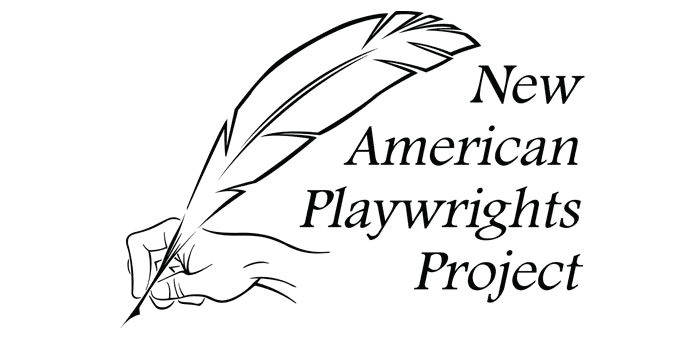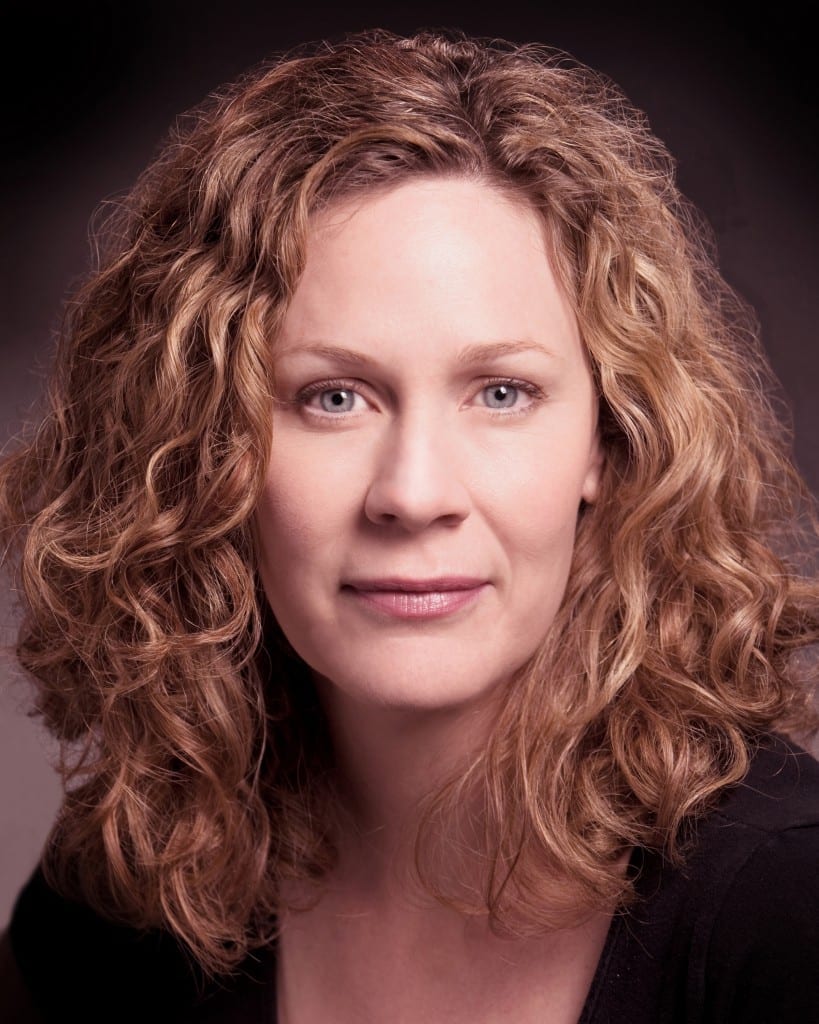CEDAR CITY — One advantage with UTBA is that we have a large team of reviewers who have their own individual viewpoints and opinions about theatre. In addition to preventing UTBA from systematically favoring certain types of productions, it also serves as a way of strengthening reputations of theaters and artists. This is because there are some groups and artists who seem to get consistently positive reviews from UTBA members, no matter who reviewers their work. One of those artists is set designer Jo Winiarski, who has repeatedly been praised by UTBA reviewers for her work at the Utah Shakespeare Festival. As a follow-up to last year’s 10-question interview, we sat down with Ms. Winiarski to talk about her designs for this year’s productions at the Festival and her viewpoints about set design in general.
UTBA: You’re now on your seventh season with the Utah Shakespeare Festival. How did you originally become associated with the Festival?
Winiarski: I was very lucky coming out of graduate school because I had met a designer named Beowulf Borritt and he was designing out here. I met him when I was an undergrad at NYU and he was in the grad program. When I went to graduate from grad school, he said, “Hey, I think I have a job for you. Do you want to go to Utah and tech this show for me?” So, immediately upon finishing grad school I came out here as his assistant. I assisted for him for years and his career got to the point where he couldn’t do the Utah Shakespeare Festival any more. So he said, “You guys should interview Jo and look at her work.” And here I am. That was seven years ago.
UTBA: What is the difference between designing sets for the Festival and for a production in New York City or another regional theater?
Winiarski: The biggest difference is the repertory system—just the size and scale of the season. I think of the season as one humongous show with three acts as opposed to three separate shows. It’s the only way for me to manage it. In other theaters you get to the point where you’re solving something and at the end of your day you say, “Tomorrow, we’re going to get on that and fix it.” Well here, tomorrow’s a different show. The set’s gone. You only tech the show every third day. You have to roll with it and think, “That’s great! We’ll get to that on Thursday.” It’s a game of managing notes and the creative process when you’re in a system that cycles every third day.
UTBA: Does that increase the burden to be organized and be on top of problems before they develop?
Winiarski: You can sink yourself into a deep, dark hole if you’re not organized. Years ago I had a conversation with Ben Hohman, the propmaster here, and we talked about how if you don’t start the season prepared, you’re just shoveling hard to stay on top of all the changes. Because rehearsals start and changes start, and to stay on top of all that you have to start the season prepared. Otherwise, you’re sunk.

Martin Kildare (left) as Atticus Finch and Jinger Axelson as Scout in the Utah Shakespeare Festival’s 2012 production of To Kill a Mockingbird. (Photo by Karl Hugh. Copyright Utah Shakespeare Festival 2012.) Set designed by Jo Winiarski
UTBA: You designed sets for To Kill a Mockingbird, Scapin, and Les Misérables this year. What were the biggest challenges in designing this season for the Festival?
Winiarski: I don’t know it even needs to be said out loud: Les Mis… in rep? We didn’t think a turntable would work in repertory well. So, very early on we decided that we were not going to solve the show like that. It was probably the most fulfilling design experiences I’ve ever had, though. Brad Carroll [the director], Jaymi Smith [the lighting designer], and I met up in L.A. and designed the show together. We locked ourselves in a room for a weekend and literally designed the set together. Just solving Les Mis was the hardest thing.
And space. When I watch Les Mis and I think of things I wanted to do differently, it’s all things where I didn’t have the space to do things differently. I’d say that’s the biggest challenge. How do you fit something that has the expectations that people have for Les Mis? People expect big operatic scenery for that show. How do you meet the expectations and yet still fit Mockingbird and Scapin in the theater?
UTBA: Yes, because they have to be backstage while the Les Mis set is on stage.
Winiarski: Yes.

A scene from the Utah Shakespeare Festival’s 2012 production of Scapin. (Photo by Karl Hugh. Copyright Utah Shakespeare Festival 2012.) Set design by Jo Winiarski.
UTBA: What was one of the biggest rewards from designing this season?
Winiarski: What I just said: designing the Les Mis set with Brad and Jaymi. It was one of the most truly collaborative design experiences I’ve ever had. I did this series of rough pencil storyboards after that weekend together. If you go back and look at the storyboards and watch the show, you can see all the moments that we crafted together in L.A. back in January. That’s thrilling and that’s how you want theatre to be. It’s how you want to make art work.
UTBA: Let’s talk about more general things now. What is the role of scenery in theatre?
Winiarski: I think that scenery should never get in the way of the play. I think that scenery is the container that should hold the play. It’s the vehicle that helps serve the play, but it should never overshadow the action. It should never be about the set. Well . . . sometimes in an act one finale it should be about the scenery. But for the most part, it should never be about the scenery.
UTBA: So that just begs the question: is it about the scenery in the act one finale of Les Mis? We haven’t seen it yet.
Winiarski: No, but there is a flag in the finale. But when we first got on stage, I saw it and said, “That’s not a finale!” And we built a bigger flag. I thought, “It’s a finale. We need a big flag.” But other than that, it should never be about the scenery. Scenery should just serve the world of the play and provide an emotional context for the world of the play. But it shouldn’t overshadow the actual text.
UTBA: You mentioned collaborations. Theatre is a collaborative art, so your set designs do not emerge out of a vacuum. What are the conditions that you believe lead to a successful collaboration with directors and other designers?

A scene from the Utah Shakespeare Festival’s 2012 production of Les Misérables. (Photo by Karl Hugh. Copyright Utah Shakespeare Festival 2012.) Set design by Jo Winiarski.
Winiarski: You always hope you can get everyone in the same room, which is very hard working regionally. I’m based in New York, for example, and Jaymi’s based in L.A. I think that when we’re all in the room it makes for the best collaboration because there’s give and take in conversation that you can’t get over the phone. Also, how I work is by building models. And then I show up to the meeting with tape and scissors and the director and other designers and I will talk, and we’ll cut and rearrange and think. I feel like that leads to the best work. It can be done otherwise, but the best collaborative experiences are when we’re all together.
UTBA: What are your criteria for judging whether one of your set designs is successful?
Winiarski: That’s a hard question. I don’t know that I’m ever completely happy with anything. I always joke that the crews want me to leave town so I stop giving notes because I can nitpick until the bitter end. And sometimes I get to the point where I say, “I should have just designed this differently,” and I start redesigning it in my mind as I watch the play. I would say that I’m probably never happy, so that’s my problem.
UTBA: So either the criteria are too tough or a successful design just hasn’t happened. Maybe it’s just a bad question.
Winiarksi: I think I just never finish. That’s why they make the designers leave town because we would never stop.
UTBA: Obviously, some scripts will give you information about where structures, doors, or walls need to be, such as in Scapin or last year’s Noises Off! What other information do you look for in a script that informs your set designs?
Winiarski: Noises Off! was the first time in my life where I asked, “Why isn’t there a ground plan in the back of the script?” It’s the only time I’ve ever wanted a ground plan. With Scapin, it’s loose. You know you need houses and upstairs windows.
UTBA: In addition to information about where things need to be, what other information do you look for in the script when you start to design?
Winiarski: The emotional world. What is this world? Is it a big world like Les Mis that needs lots of height and space for the emotion? I feel like Les Mis is so operatic that the scenery needs to be tall because so much of what Les Mis is about is this yearning for something else. But other plays are much more like a pressure cooker where you want the actors to have to be closer together, and you don’t want someone to walk 20 feet away from somebody else. You want to keep the actors close to heighten the tension and let the scene have fire.
That’s what I’m looking for: what is the emotional world that we’re trying to create? And it comes back to that word I always use: what is that container for this world? Is this a big open tall container to hold large operatic songs? Or is this a tight container? Or if it’s like Scapin, the question is how close can we take this to the audience? We wanted to go very vaudeville with that one and get it downstage and close to the audience to let the comedy play.
UTBA: Visually, what do you draw upon for inspiration when designing a set? Who influences you in general? Or do you look for specific influences for specific shows?
Winiarski: I do lots and lots of research. For Les Mis I looked at lots of Romantic paintings, like Turner. I feel like that period of art is relevant to the emotional scale of Les Mis. For Scapin, my research was all over the place. We looked at American vaudeville, Italian commedia ink etchings, French period theatre, and more. It felt like we were taking all these things and throwing them into a box and shaking it really hard.
And I feel like Scapin has a little bit of my sense of humor, too. Friends of mine joke about my love of glitter and shiny things. So that show let me get a little bit more of what I love into the set.
For myself as a set designer, I’m lucky I live in New York City. So, I see lots and lots of visual art. I go to the Chelsea galleries and the museums a lot. I see a lot of visual art because that feeds me the most.
UTBA: You could make the argument that set design is visual art with people in front of it with people singing or telling a story.
Winiarski: I feel like theatre is behind contemporary art. So, I feel like if you can keep an eye on contemporary art, you can see where the visual experience of 2012 is and how people see the world. When you watch MTV you can see contemporary art in the videos. “That’s totally like a Dan Flavin piece!” It’s interesting to see how things start with contemporary art, then make their way into mass media, and then filter into theatre.
UTBA: I’m glad you mentioned MTV and television because you’ve designed some for MTV and other channels like the Food Network. Tell us something about designing for television.
Winiarski: I have done very little production design. I’ve mostly worked as an art director. I really love my time in television. It’s a whole different pace. It’s a very different scale of money for the actual work because it happens so fast. In theatre because of budgets, you work further out because time is money and it’s cheaper if you order materials in advance. In television it’s a whole different schedule. For a pilot I worked on, I drew something at 5 o’clock and it was on the set at 8 AM the next morning. There’s a different speed to it. But it’s fun and it’s great to do something that’s totally different and outside of theatre once in a while.
I’ve art directed for MTV and awards shows. And it’s fun to see the technology that hasn’t yet made it into theatre. And I think, “Oh, look at those lights. That’s interesting. Oh, look at that video thing.” It’s interesting to see that stuff that will come to theatre once it gets cheaper.
UTBA: Do you have any last words you would like to say to our readers about anything related to your work?
Winiarski: I feel very indebted to the Festival because they hired me when I was a really young designer and they gave me an artistic home to grow and figure out who I am as a designer. I feel very lucky to have been here for this long. Now I understand so much of the structure that I can grow as an artist by returning so often. I feel so lucky. And it’s totally beautiful here, and I love doing this work in what might be the most beautiful part of the country.






